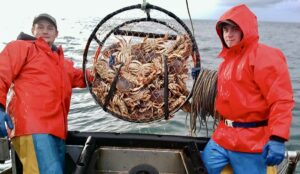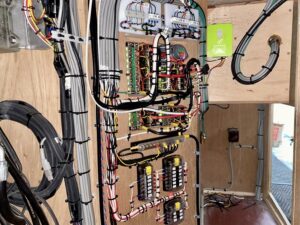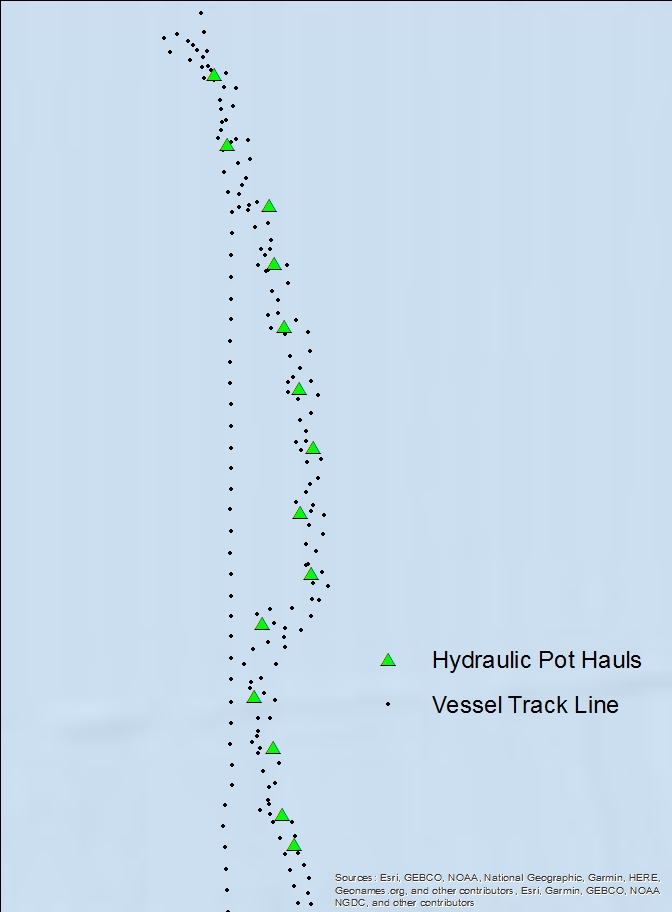The Washington coastal commercial Dungeness crab fishery is the most economically significant commercial fishery in Washington State, with an average annual ex-vessel value of approximately $46.5 million. The fishery is managed by the Washington Department of Fish and Wildlife (WDFW). Along most of the state’s coast, the fishery is co-managed with four coastal treaty tribes, and Harvest Management Plans between each tribe and WDFW are negotiated annually, all in accordance with federal adjudication of fishing rights. These often include temporary area-based measures, such as closures and/or pot limits, to help achieve harvest sharing parity. Fishing location data for the non-tribal fleet, including data used to track harvest sharing throughout the season, is currently collected using paper vessel logbooks and buyers’ fish receiving tickets.

Electronic Monitoring (EM) Solutions
WDFW sees EM as a valuable tool to modernize the management of the Washington coastal commercial Dungeness crab fishery. Fleetwide implementation of EM will improve accuracy and timely receipt of fishing location data that is needed to effectively meet co-management needs, to enforce closed area boundaries, to help assess entanglement risk with marine mammals, and to protect public health in the event of a biotoxin closure.

Recently, WDFW learned of a new EM system, the FishVue LIME (Lite Integrated Monitoring Equipment) designed by Archipelago. LIME offers affordability, a relatively small footprint, capability to incorporate a hydraulic sensor and compatibility with radio frequency identification (RFID) tags. Such a system offers many benefits for small-scale fishing operations. WDFW partnered with Archipelago to test the LIME system in our NFWF-funded project.
Phase 1 of the project involved installing the LIME units on four vessels and giving each skipper an electronic logbook to record fishing location information. Two vessels were also equipped with hydraulic sensors and RFID readers to determine when fishing activity occurred. Vessels equipped with RFID readers attached RFID tags to individual pots and buoys to determine the most effective tag location. WDFW worked with Archipelago to resolve technical issues found during testing and ensure the equipment was monitoring 100% of fishing trips taken. WDFW used participating vessel’s electronic logbook information to evaluate the accuracy of the fishing location data produced by the LIME system.

The project is currently in Phase 2, which includes expanding the participating vessels to twelve and installing hydraulic sensors on every vessel in the project. During this Phase, WDFW also seeks to further refine data protocols, test the data flow developed in Phase 1, conduct outreach with the larger fishing community in the region and ensure LIME data is visible to staff through Archipelago’s FishVue Fleet visibility tool. WDFW has already begun to deploy observers to compare EM and observer data.
What’s Next?
WDFW will continue to assess EM data to determine how EM can best meet the management needs of the Washington coastal Dungeness crab fishery. Project results will be used to determine system requirements for implementation of EM that meets management and operational needs of the coastal crab fishery.
Robert Morgan is Region 6 Coastal Shellfish Electronic Monitoring Project Manager for the Washington Dept. of Fish & Wildlife. He welcomes your questions or comments via email. Projects in the Field is a series of independently produced articles profiling work supported by NFWF’s Electronic Monitoring & Reporting Grant Program, and is meant to raise awareness and support for these important initiatives.


